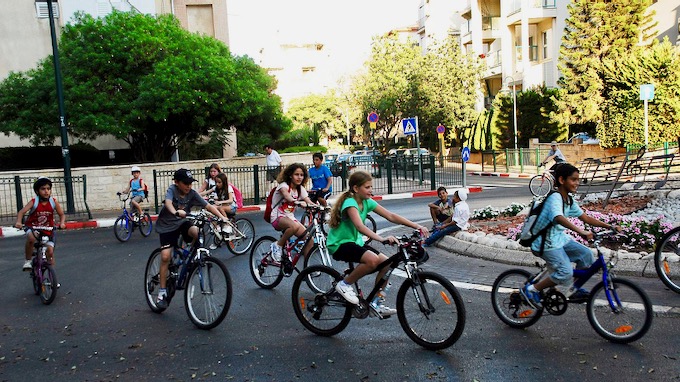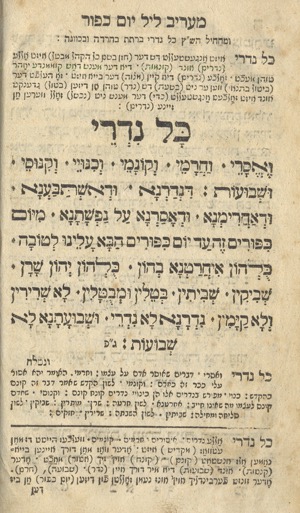
KIDS TAKE OVER THE HIGHWAYS—Lots of Yom Kippur photos of kids on bikes—riding along usually congested Israeli streets—have become some of the most popular social media images of the holiday. Years ago, there was more debate about whether this is appropriate. However, girls and boys younger than 13 are not obligated to observe the holiday as strictly as adults, so most Israelis have come to accept this kid-friendly festival of bikes as a part of the annual observance. (Photo shared via Wikimedia Commons by Udi Steinwell.)
.
SUNSET TUESDAY, OCTOBER 8: From the hope-filled celebration of Rosh Hashanah, Jewish families move to the solemn observance of what often is called the holiest day in the calendar: Yom Kippur, or the Day of Atonement. Most Jews aged 13 and older try to complete a 25-hour fast with nothing passing the lips—no liquids or foods of any kind. That extreme fast deepens each individual’s spiritual reflections and makes everyone across the community share in completing a difficult tradition.
Between the two major holidays of Rosh Hashanah and Yom Kippur—a period sometimes called the Days of Awe—Jews reflect on the past year and make amends for their failings. They look toward the balance of the new year 5780 (which is only 10 days old on Yom Kippur) and pray that God will renew their spirits and guide them in good ways.
YOM KIPPUR: THE HOLIEST DAY
Visit any Jewish house of worship and you will see ways that the main seating area can be expanded on special occasions. On Yom Kippur, all overflow seating areas are opened so that everyone in the Jewish community can show up for at least part of the long series of services.
Services open with Kol Nidre, a deeply emotional moment when the larger Jewish community gathers, amends are made, and the community symbolically opens itself to regular attendees as well as others who rarely come to services. There is a long and complex history to the traditions of Kol Nidre, but overall, it represents a fresh resetting of commitments and promises within the community.
The rest of the Yom Kippur litugy also has beautiful moments that encourage repentance, recommitment to the faith’s ideals and remembrance of the core story that has led the Jewish people through thousands of years of challenges. Rabbis typically spend a great deal of time preparing their Yom Kippur sermons, recognizing that they are preaching to many men and women who only hear them on Yom Kippur.
A PERSONAL REFLECTION FROM SUZY FARBMAN
Our beloved columnist Suzy Farbman, author of GodSigns, has written about her own personal practice at this holiday—which illustrates the mix of reflections on family and the larger world that come together on Yom Kippur:
Every year I touch base with Judaism at Yom Kippur services. I take our prayer books to Temple Beth El and have them signed by whichever family members join us. I look forward to acquiring a few more signatures each year.
Yom Kippur is a time to reflect on how we may have wronged God or others. I don’t think I have much to atone for, but each of us can do better and be better. Each of us can pray for a more peaceful world. The prayer I most look forward to at this time of year seems especially meaningful in light of recent worldwide unrest:
“Grant us peace, oh thou eternal source of peace, and enable Israel to be its messenger to the peoples of the earth. Bless our country, that it may always be a stronghold of peace, and its advocate among nations. May contentment reign within its borders, health and happiness within its homes. Strengthen the bonds of friendship among the inhabitants of all lands, and may the love of your name hallow every home and every heart. Blessed is the Eternal God, the Source of peace.”


Tell Us What You Think